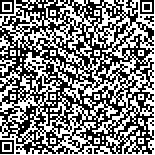| 引用本文: | 迟艳红,王玮,王文章,黄有松.实验室海月水母大规模解体的初步研究[J].海洋科学,2018,42(11):43-50. |
| |
|
| |
|
|
| 本文已被:浏览 2349次 下载 1487次 |

码上扫一扫! |
|
|
| 实验室海月水母大规模解体的初步研究 |
|
迟艳红1, 王玮1, 王文章1, 黄有松2
|
|
1.青岛海产博物馆, 山东 青岛 266003;2.青岛农业大学, 山东 青岛 266109
|
|
| 摘要: |
| 本实验针对两次突发的饲养海月水母(Aurelia aurita)大规模烂洞解体状况,通过对病灶处进行细菌培养,从其中每次发病水母中均各分离到2种优势病原菌菌株,利用PCR扩增和DNA测序技术,获得优势菌株16S rRNA基因序列,通过生物信息比对分析显示,导致两次海月水母发病的病原菌菌株分别为2种嗜冷杆菌(Psychrobacter sp.)和2种弧菌(Vibrio splendidus&Vibrio neptunius)。通过利用福林酚法进行此四种优势菌株的细菌发酵培养液蛋白酶活性的测定,结果显示,此4种细菌均具有较强的蛋白酶活性。根据实验结果推测,分离所得的2种嗜冷杆菌菌株(Paa1&Paa2)和2种弧菌菌株(Vaa1&Vaa2)作为此次发病海月水母的病原菌,有可能均是通过分泌胞外蛋白酶侵蚀水母伞体,从而导致伞体烂洞解体。通过本次实验分析,推测自然条件下水母暴发后的快速消亡是由水母自身免疫下降与细菌侵染的共同作用导致。 |
| 关键词: 水母解体 海月水母病原菌 16S rRNA基因 蛋白酶活性分析 |
| DOI:10.11759/hykx20180606002 |
| 分类号:S369.3 |
| 基金项目:国家自然科学基金青年基金项目(41506131) |
|
| Preliminary studies on large-scale moon jellyfish Aurelia aurita decomposition under laboratory conditions |
|
CHI Yan-hong1, WANG Wei1, WANG Wen-zhang1, HUANG You-song2
|
|
1.Qingdao Marine Product Museum, Qingdao 266003, China;2.Qingdao Agricultural University, Qingdao 266109, China
|
| Abstract: |
| An experiment based on two outbreaks of moon jellyfish (Aurelia aurita) under artificial conditions was conducted. Two bacterial strains were isolated from each pathogenetic moon jellyfish. Homology and phylogenetic analyses based on 16S rRNA gene revealed that the four bacterial strains exhibited high similarity to two Psychrobacter bacteria (Psychrobacter sp.) and two types of vibrio (Vibrio splendidus and V. neptunius). The protease activities of the four bacterial strains (Paa1, Paa2, Vaa1, and Vaa2) were detected by Folin-Ciocalteu method. Results showed that all of the four bacterial strains exhibited strong protease activity. The present data suggest that the pathogenic bacteria could disintegrate the moon jellyfish by secreting proteases. Considering the results and analysis of our experiment, we speculate that the jellyfish decomposition after blooming under natural conditions is due to a combination of reduced immunity and bacterial infection. |
| Key words: jellyfish decomposition pathogenic bacteria 16S rRNA gene protease activity |
|
